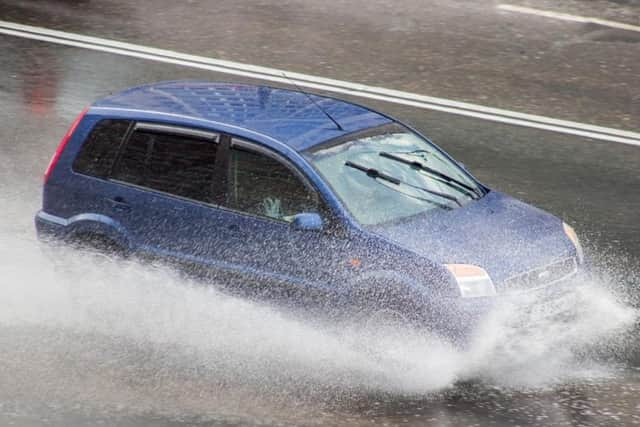With more wet weather on the way Aylesbury Vale residents are urged to drive safely


Earlier this week a large portion of the UK was covered by either a yellow or an amber alert for heavy rain and thunderstorms.
And with that in mind, National Driving School of the Year 2019 www.billplant.co.uk has compiled the below tips to ensure drivers are as prepared as possible for when the weather turns and they get caught driving in torrential downpour.
The advice is as follows:


Demist your car
Advertisement
Hide AdAdvertisement
Hide AdFirst and foremost, before you even set off, ensure that all windows in your car are demisted. Do not set off when just enough has been demisted to see what’s directly in front of your face and hope that the windows will soon fully clear after setting off. You need to ensure all windows are demisted completely so that you are aware of every area around your car.
Ensure your windscreen wipers are on top form
Heavy levels of rain are far more common at this time and year and, with the days getting dark so early, it’s important that your windscreen wipers are as good as new as you’re going to need them to improve your visibility. Worn or broken windscreen wipers will not properly clear your windows of moisture and debris and can result in clouded vision and increased chances of an accident.
Slow down and double your stopping distances
Wet roads lead to wet brakes; the former leads to less tyre traction on the road and the latter leads to brakes that can be slower to react. As a rule of thumb, stopping distances need to be DOUBLED (x2) in the wet. For typical stopping distances if you’re travelling 30mph, it’s recommended that you give yourself an overall stopping distance of 75 feet (30 feet for thinking distance). This would increase to 120 feet should you be travelling at 40mph, 175 feet if travelling at 50 and 240 feet if travelling at 60mph.
Use your lights
It can be easy to forget to use your lights, especially with the days seeming shorter, but if your car doesn’t have automatic lights then be conscious of the level of natural light. It may seem light enough out there at 5pm but, if you have any inkling of doubt, it’s best to pop them on just to be safe. They will make you stand out to the traffic around you, as well as providing an extra line of sight to what is around you.
Avoid standing water
Advertisement
Hide AdAdvertisement
Hide AdDriving into a large body of standing water on the road will not only slow your vehicle down by itself, giving no warning to any vehicles behind, it can impair your vision by spraying the front window. Additionally it could also cause you to aquaplane and lose control of your car or it could be hiding potholes and debris below it, which could very well cause damage to your car or a crash.
Ensure you’re in full control of your vehicle
This doesn’t just mean having both hands on the steering wheel to prevent the car from slipping out from beneath you, but it also means avoiding cruise control. If you were to cross standing water, cruise control can lead to your car speeding up, making a scary situation wherein your car may aquaplane, even worse.
But most importantly, stay safe!
Finally, and most importantly, it’s imperative to stay safe. Whether that means you need to slow right down to a speed that is comfortable, and of course safe for those around you, or to pull over somewhere that is safe to do so. If you are not comfortable driving in the rain, get public transport or lift share with someone who is.